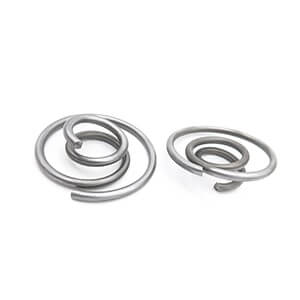Get unique, complex parts easily. No matter your requirements, Chaoyi Spring creates hard-to-produce coil springs and wire forms.
Let us help you create the custom wire form you need, from S-hooks and J-hooks to utility hooks and more.
We work closely with customers across a wide range of industries, helping them design and manufacture made-to-order parts.
Why choose Chaoyi Spring? We prioritize customer-focused collaboration, modern equipment and the latest technology to make your parts per print.
Find the information and guidance you need, from measuring a spring to learning about materials, placing an order and much more.
Tension, ladder, and springs are seemingly disparate concepts, but they are interconnected in the realm of physics and engineering. Tension is a force that acts in a stretched object, like


Tension, ladder, and springs are seemingly disparate concepts, but they are interconnected in the realm of physics and engineering. Tension is a force that acts in a stretched object, like a rope or a spring. A ladder provides stability and support, often relying on tension to maintain its structural integrity. Springs, on the other hand, are mechanical devices that store and release energy based on their tension. This article delves into the intricate relationships between these elements, exploring their underlying principles and practical applications.

Tension, in essence, is a pulling force that acts along the length of an object. Imagine pulling on a rope; the force you exert is tension. This force is a critical factor in determining the stability and behavior of various structures and systems.
The magnitude of tension depends on the material's properties and the applied force. A stronger rope can withstand greater tension before breaking. Tension can also be used to measure the force applied to a system, such as in a spring scale.
Ladders, seemingly simple structures, rely heavily on tension to maintain their stability. The tension in the rungs and the legs of a ladder helps to distribute the load and prevent collapse. When climbing a ladder, you're essentially applying tension to its structure, which the ladder must counter to stay upright.
The angle of the ladder is crucial to its stability. A steeper angle increases tension in the legs, making the ladder more prone to tipping. Conversely, a gentler angle reduces tension, but might cause the ladder to slide.
Springs, like tension, are often used to store and release energy. These fascinating devices work by compressing or extending their internal structure. The amount of tension in a spring is directly proportional to its displacement from its resting position.
Hooke's Law, a fundamental principle in physics, describes the relationship between the force applied to a spring and its displacement. This relationship is linear, meaning that doubling the force will double the displacement.
Springs are ubiquitous in our daily lives. They are used in everything from car suspension systems to clock mechanisms to medical devices. Their ability to absorb and release energy makes them indispensable in various applications.
While tension, ladders, and springs might appear distinct, they share a common thread: tension. The tension in a rope used to secure a ladder is crucial for its stability. Similarly, the tension in a spring is what allows it to store and release energy. The principles of tension govern the behavior of these seemingly disparate elements.
Understanding the interplay between tension, ladders, and springs is not only intellectually stimulating but also has practical implications. In construction, engineers carefully calculate the tension in structural elements to ensure the safety and integrity of buildings. In mechanics, the understanding of tension helps in designing and optimizing spring-based systems for various applications.
The relationship between tension, ladders, and springs goes beyond the basics. Advanced concepts, such as the elastic limit of materials, the role of friction, and the dynamics of oscillating systems, provide a deeper understanding of these elements. Exploring these concepts can lead to innovative solutions in various fields, from materials science to robotics.
Tension, ladders, and springs are interwoven in the fabric of physics and engineering. By understanding their relationships, we can appreciate the intricate workings of the world around us. From the stability of a ladder to the energy storage capabilities of a spring, tension plays a critical role in shaping our understanding of the physical world. Further exploration of these concepts will continue to unveil new insights and applications, driving innovation across diverse fields.
This exploration of tension, ladders, and springs has highlighted the interconnectedness of seemingly disparate concepts. Understanding these relationships is essential for engineers, scientists, and anyone interested in the workings of the physical world. As technology advances, further research and innovation in these areas will undoubtedly lead to remarkable advancements and breakthroughs.
Browse some of the custom wire forms and springs that we manufacture. Don’t see what you need? We specialize in made-to-order products that meet your application requirements.
Visit Our GalleryNeed a custom wire form or coil spring? We make it work. Fill out the contact form and a representative will respond within 1 business day. If you have a PDF or CAD file, you can submit to request a quote.